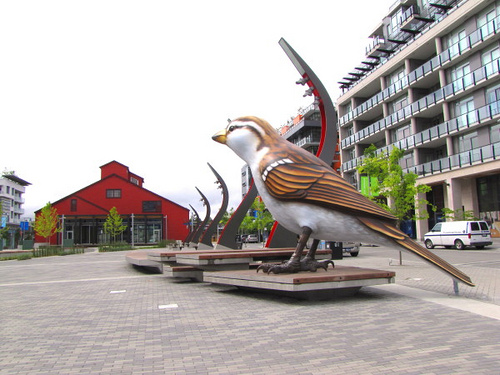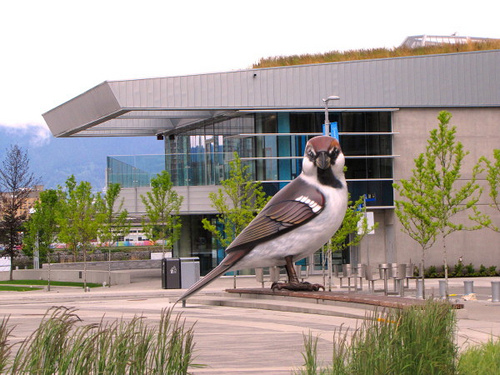
Located in the common area shared by the Olympic Village’s Community Centre, the Salt Building and retail floor spaces is a plaza where it will become a people’s gathering place for the entire Southeast Falsecreek area.
Here out in the plaza, you will also find Vancouver artist Myfanwy MacLeod’s two larger-than-life sparrows (or ‘The Birds’) painted with the true colors of the small bird that was introduced to North America from England in the 1800s.
Since then, sparrows have multiplied so much that they crowded out other native species, upsetting the ecology and biodiversity of the continent. MacLeod’s pair of giant sparrows (one male and one female) are 18 ft. tall and they dwarf visitors to the plaza.
The sculptor said the idea of making the small bird bigger was to underline the message that when a foreign specie is introduced, it could wreak havoc upon the native eco-system and make us aware of the interdependence of nature. MacLeod’s message couldn’t be more appropriate for the Southeast Falsecreek site which was an industrial wasteland that was very much polluted before the Olympic Village was built.

In developing the Millennium Water project, special attention was paid to environmental impacts, both in the past and in the future. The whole site was designed to follow LEED Gold and Platinum guidelines. An artificial man-made Habitat Island was also created to encourage the growth of habitat both on land and in the water.
It was recently discovered that herring eggs are beginning to appear in the once dirty Falsecreek shoreline. Not co-incidentally, the Olympic Village was recognized as the World’s Greenest Neighborhood.